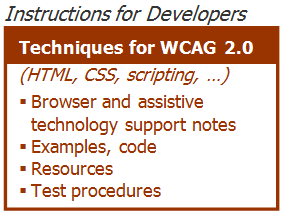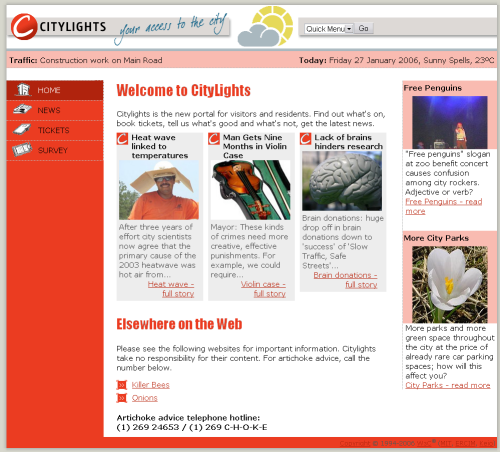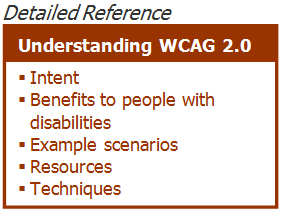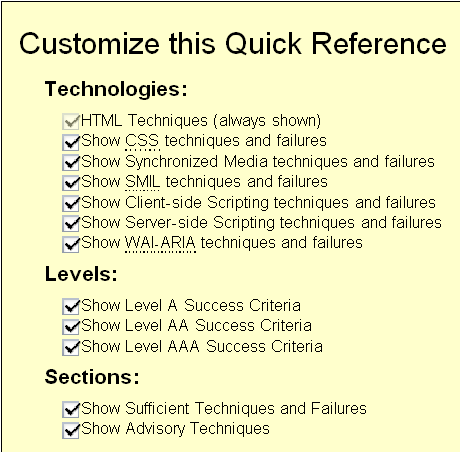Notes
Techniques tell you how to meet WCAG 2
The Techniques for WCAG 2 is a supporting document that tells you how to develop accessible web content that meets WCAG 2. It provides specific details:
- Description
- Examples, such as HTML code
- Browser (User Agent) and Assistive Technology Support Notes
- Resources
- Tests
It also shows you common "failures", that is, some examples of how you can mess up and not meet the success criteria.
Where as WCAG 2 will be a stable document, the Techniques document can be updated as technologies and new techniques are
developed. That's how WCAG 2 can provide a stable basis, with
flexibility to adapt over time - through the Techniques.
Currently there are: General techniques, HTML techniques, CSS
techniques, Server-Side Techniques, and others. More Techniques will be
developed in the future.
WAI encourages development of techniques for non-W3C technologies as
well, so there may be techniques for Flash or PDF or XYZ technology.
While W3C WAI will not directly develop techniques for these other
technologies, it will encourage their development.
Techniques are "informative"
Again, the Techniques are not part of the WCAG 2 standard, and you
don't have to use them to meet WCAG 2. You could develop other ways to
meet WCAG 2. This is another aspect of the flexibility of WCAG 2.
(By the way, if you develop new techniques to meet WCAG 2, you can
submit them for review and inclusion in updates to the Techniques
document.)
Note to presenters: A larger version of the image is available at www.w3.org/WAI/intro/wcag20docs-techniques-lg.png
[image description:
Instructions for Developers
Techniques for WCAG 2.0
(HTML, CSS, scripting,. . .)
- Browser and assistive technology support notes
- Examples, code
- Resources
- Test procedures
]






